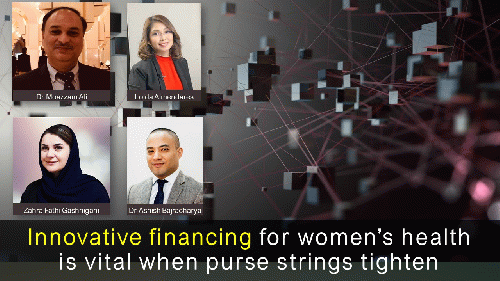
Innovative and sustainable financing for health and development is vital especially in times of pandemic and looming threat of economic crisis
(Image by CNS) Details DMCA
The COVID-19 pandemic has exposed the fragility of weak health systems that were ill prepared to withstand the onslaught of the pandemic. As documented by the Pulse survey of the WHO, the pandemic has resulted in disruption of essential health services, including sexual and reproductive health services, in most countries. Weak and perpetually poorly resourced health systems have escalated the woes of the public, more so in low- and lower-middle income countries. This disaster has reinforced the need for countries to not only increase their public health spending, but also explore innovative ways of financing healthcare systems.
More than 50% of countries in the Asia and the Pacific region come under the category of low- and lower-middle income countries. While there has been economic growth in the region resulting in corresponding improvements in health service delivery systems, in many countries these gains are unjustly reserved for the elite few in terms of quality and timely services, says Dr Ashish Bajracharya, Population Council's Deputy Director for global country strategy and regional representative for South and East Asia. Large parts of our populations still have an unmet need in sexual and reproductive health and out-of-pocket expenditures continue to pay for most of the healthcare expenditures. For Dr Bajracharya, it is critical to work towards universal health coverage and to promote sustainable financing strategies, including heightening of commitments of state resources for sexual and reproductive health.
Dr Bajracharya was Chairing the sixth session of the ongoing virtual series of 10th Asia Pacific Conference on Reproductive and Sexual Health and Rights (APCRSHR10). Two interesting studies were presented in this APCRSHR10 session from Pakistan and Philippines. The first study was presented by Dr Moazzam Ali, noted epidemiologist at the World Health Organization (WHO), who shared the results of a research project on "demand side financing" implemented in two districts of Punjab province of Pakistan to meet birth spacing needs of the underserved.
What is demand side financing?
Dr Ali explains that the three key components of any demand side financing project are (i) a pre-specified target group, like, pregnant women, children under five years of age, poor households, etc; (ii) a financial transfer to the beneficiaries through the government, the private sector, NGOs or some other mechanism. It can be a direct conditional cash transfer or it can be via vouchers; and (iii) a very clear rationale for the choice of services covered, for example, immunisation, family planning, cancer screening etc. Any intervention that meets these three conditions qualifies to be a demand side financing.
This particular study was done to assess the effectiveness of free, single-purpose vouchers for increasing the uptake, use and better targeting of modern contraceptives among women from the lowest two wealth quintiles in rural and urban communities in Pakistan. The project tried to see if vouchers can contribute in achieving universal health coverage, especially in the context of sexual and reproductive health and, more specifically, for family planning.
The study was implemented across an intervention (Chakwal) and a control (Bhakkar) district in Punjab province. 1276 married women of reproductive age were enrolled in each arm. The single purpose voucher was from Marie Stopes International branch in Pakistan. Services included follow ups/ side effects management, services regarding the modern contraceptives and the removal services (for the implants and Intrauterine devices-IUDs).
Did the intervention enhance equity, especially among the poor?
(Note: You can view every article as one long page if you sign up as an Advocate Member, or higher).





